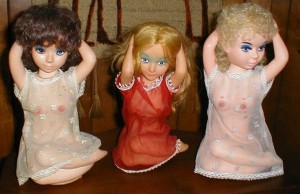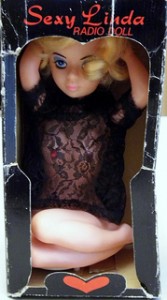In the late 70s–early 80s I volunteered in a shelter for homeless women run by nuns. It was the era of “shopping bag ladies,” women who lived on the street and carried their possessions around in bags. To the non-homeless they were mythical figures; no one knew where they came from or why they “chose” to live that way. Theories abounded, and their contradictions intrigued me. I decided to discover the reality.
It turned out to be pretty prosaic. The largest single factor in making these women homeless was a political decision: emptying the state mental hospitals without making adequate provision to support the ex-inmates in the community. Personal events, like the death of a husband who took care of business, also played a big role; many women who were middle-aged at that time had been raised to be good wives, which meant not knowing how to manage a checkbook and pay bills. (My book The Women Outside: Meanings and Myths of Homelessness is based on my experience at the shelter.)
But people in extreme situations lose their grounding in the realm of the ordinary. Their minds are invaded by myth. The women I met acted out vivid archetypes of femaleness that feminists were then just beginning to analyze. Deeply influenced by Jung at the time, I found myself plunged into a world where the archetypes walked around breathing and speaking in symbols. One incident in particular comes to me now.
The mission of the Franciscan nuns who founded the shelter was to follow St. Francis’ example by serving those in need, which to the sisters meant the homeless women they saw on the streets of midtown Manhattan. So the nuns and the women of the streets came together in a single household—a four-story brownstone in an area then known as Hell’s Kitchen. To the nuns, each woman was a precious soul whom they welcomed into the community of spirit they created there. But other people perceived only the archetypes. I remember making a phone call to the VA to see if I could get help for a homeless woman who had served in the army. The nice lady I spoke to couldn’t understand why I was calling about someone old enough to be a veteran; when she heard “homeless women,” she assumed we were all young and pregnant.
The first “bag lady” to show up when the shelter opened was a woman I’ll call Dora. Probably in her 50s, she walked bent over, shuffling along in sneakers and white socks. Her voice was deep, snuffly, nasal. She soon moved into a nearby hotel, but dropped in frequently for meals and company, always toting a couple of bags. Dora was gregarious, and what she said was generally sensible and often quite penetrating.
Like many women at the shelter, Dora was much concerned with her own femininity and sexuality. She told me about her boyfriend, who had died ten years before (“I’ll never see a man like him again”), and pondered her prospects of getting another one. She grilled me about whether I was married, why I had gotten divorced, and whether I had a boyfriend now.
That Christmas she gave Sister Elizabeth a present: a transistor radio in the shape of a sexy doll, blonde and naked, sitting on her folded legs (I had seen the same one in a junk store nearby). The doll had enormous breasts with huge red nipples; one was the on-off-volume switch, the other the tuner. The radio itself was in the bottom.
It was totally characteristic of Dora’s perceptiveness (and her streak of malice) that she chose to give this grotesquely vulgar object to Elizabeth, the most “nunny” of the sisters, the one whose sexuality was least in evidence. (These were post–Vatican II nuns, who lived uncloistered and wore jeans instead of habits.) The radio was a reminder of something that, in Dora’s mind, the nuns were getting away with forgetting. In a way she was speaking for all the women at the shelter—victims of rape, their own desires, unwanted pregnancy, abuse and desertion by men, society’s condemnation and indifference—coming face to face with the five sisters, toward whose deliberately nonsexual lives they felt (I sensed) an obscure hostility. Dora was sending a telegram:
HERE—GIVING BACK WHAT YOU THREW AWAY.
I don’t know whether Elizabeth got the message, but I drank it in. That place was so fruitful for a writer’s imagination: I didn’t have to invent images, a cornucopia was offered me every day. The danger, though, was falling into the archetypes myself—but that’s another story.


